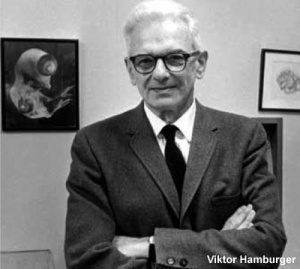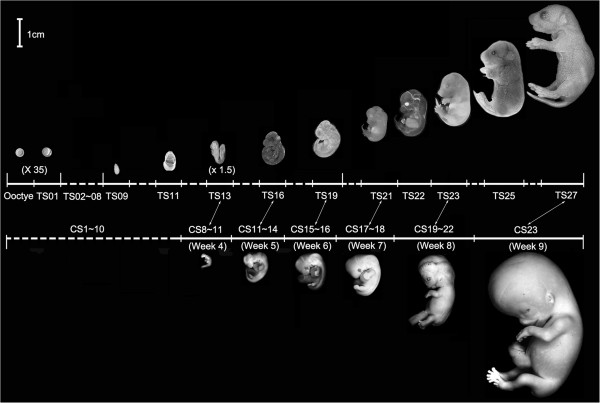ANAT2341 Lab 10: Difference between revisions
No edit summary |
No edit summary |
||
| (29 intermediate revisions by 2 users not shown) | |||
| Line 1: | Line 1: | ||
== | ==Organogenesis Lab== | ||
== 1. QUIZ == | |||
== 2. Organogenesis Lab == | |||
In this lab there will be two main activities: | |||
1. We will open up fertilized eggs with life chicken embryos at around early to late stage gastrulation, ie after 12-24 hours of development. In preparation of this class, please watch [https://www.youtube.com/watch?v=NTUHX1mRfiE this video] showing instructions how to open fertile eggs (1 to 2.30 minutes) and some basic experimentation. | |||
2. We will also slice up some flatworms/planarians to witness their capacity to fully regenerate their body parts within two weeks. In preparation of this practical class, please watch the following movie of this amazing little creature featuring Alejandro Sánchez Alvarado, a pioneer in the stem cell field who uses planarians for his research: [https://www.youtube.com/watch?v=Bw1U7_Tk0H0|Movie]. | |||
Practical Class Notes will be available on Moodle | |||
===Additional Chicken Links=== | |||
[[File:Viktor Hamburger.jpg|thumb|alt=Viktor Hamburger|link=Embryology History - Viktor Hamburger|Viktor Hamburger (1900 – 2001)]] | |||
More about chicken embryogenesis: [[Chicken Development]] | [[Hamburger Hamilton Stages]] | |||
<br> | |||
{{Chicken links}} | |||
<br> | |||
<gallery> | |||
File:HHstage1-4.jpg|stage 1-4 | |||
File:HHstage5-10.jpg|stages 5-10 | |||
File:HHstage11-14.jpg|stages 11-14 | |||
File:HHstage15-18.jpg|stages 15-18 | |||
File:HHstage19-21.jpg|stages 19-21 | |||
File:HHstage22-25.jpg|stages 22-25 | |||
File:HHstage26-28.jpg|stages 26-28 | |||
File:HHstage29-32.jpg|stage 29-32 | |||
</gallery> | |||
===Additional Planarian Information=== | |||
[https://cuttingclass.stowers.org/en Link to Cutting Class Educational Resource] | |||
== | ===Additional Mouse Development Information=== | ||
[[File:Mouse_vs_Human_embryogenesis.jpg]] | |||
''This figure compares the human and mouse developmental stages'' | |||
More about Mouse embryogenesis: [[Mouse Timeline Detailed]] | |||
{{2018ANAT2341}} | |||
Latest revision as of 16:43, 30 September 2019
Organogenesis Lab
1. QUIZ
2. Organogenesis Lab
In this lab there will be two main activities:
1. We will open up fertilized eggs with life chicken embryos at around early to late stage gastrulation, ie after 12-24 hours of development. In preparation of this class, please watch this video showing instructions how to open fertile eggs (1 to 2.30 minutes) and some basic experimentation.
2. We will also slice up some flatworms/planarians to witness their capacity to fully regenerate their body parts within two weeks. In preparation of this practical class, please watch the following movie of this amazing little creature featuring Alejandro Sánchez Alvarado, a pioneer in the stem cell field who uses planarians for his research: [1].
Practical Class Notes will be available on Moodle
Additional Chicken Links
More about chicken embryogenesis: Chicken Development | Hamburger Hamilton Stages
Additional Planarian Information
Link to Cutting Class Educational Resource
Additional Mouse Development Information
This figure compares the human and mouse developmental stages
More about Mouse embryogenesis: Mouse Timeline Detailed
| 2018 ANAT2341 - Timetable | Course Outline | Moodle | Tutorial 1 | Tutorial 2 | Tutorial 3 |
Labs: 1 Preimplantation and Implantation | 2 Reproductive Technology Revolution | 3 Group Projects | 4 GM manipulation mouse embryos | 5 Early chicken eggs | 6 Female reproductive tract | 7 Skin regeneration | 8 Vertebral development | 9 Organogenesis Lab | 10 Cardiac development | 11 Group projects | 12 Stem Cell Journal Club |
|
Lectures: 1 Introduction | 2 Fertilization | 3 Week 1/2 | 4 Week 3 | 5 Ectoderm | 6 Placenta | 7 Mesoderm | 8 Endoderm | 9 Research Technology | 10 Cardiovascular | 11 Respiratory | 12 Neural crest | 13 Head | 14 Musculoskeletal | 15 Limb | 16 Renal | 17 Genital | 18 Endocrine | 19 Sensory | 20 Fetal | 21 Integumentary | 22 Birth | 23 Stem cells | 24 Revision |
| Student Projects: Group Projects Information Project 1 | Project 3 | Project 4 | Project 5 | 2018 Test Student | Copyright |









